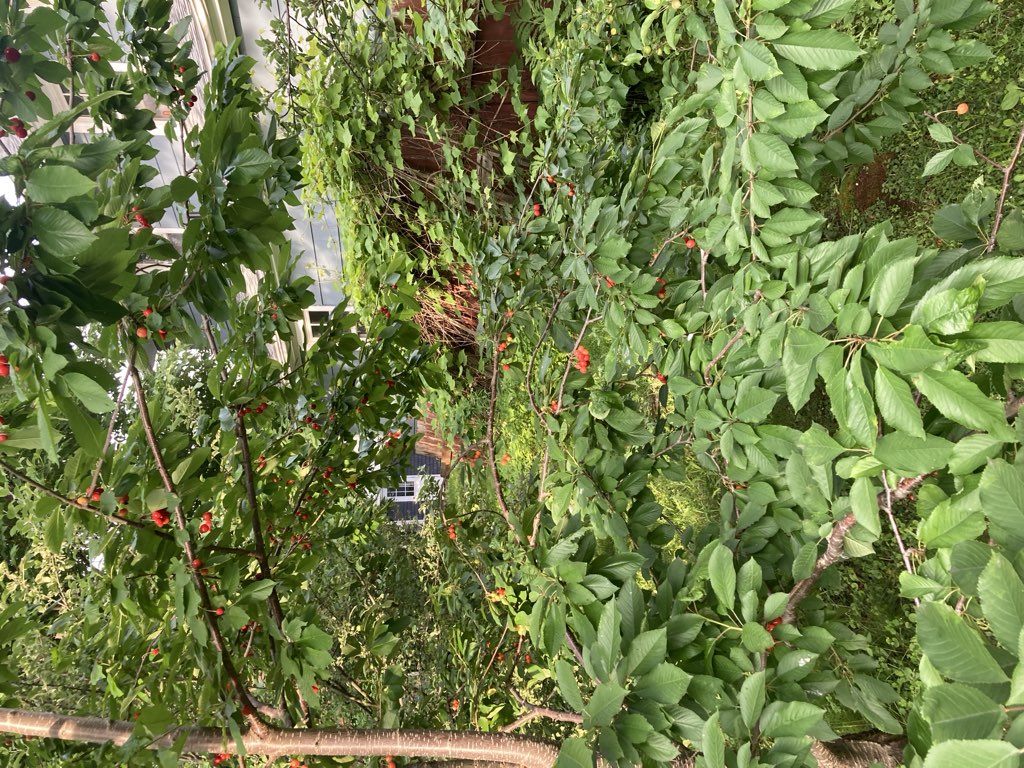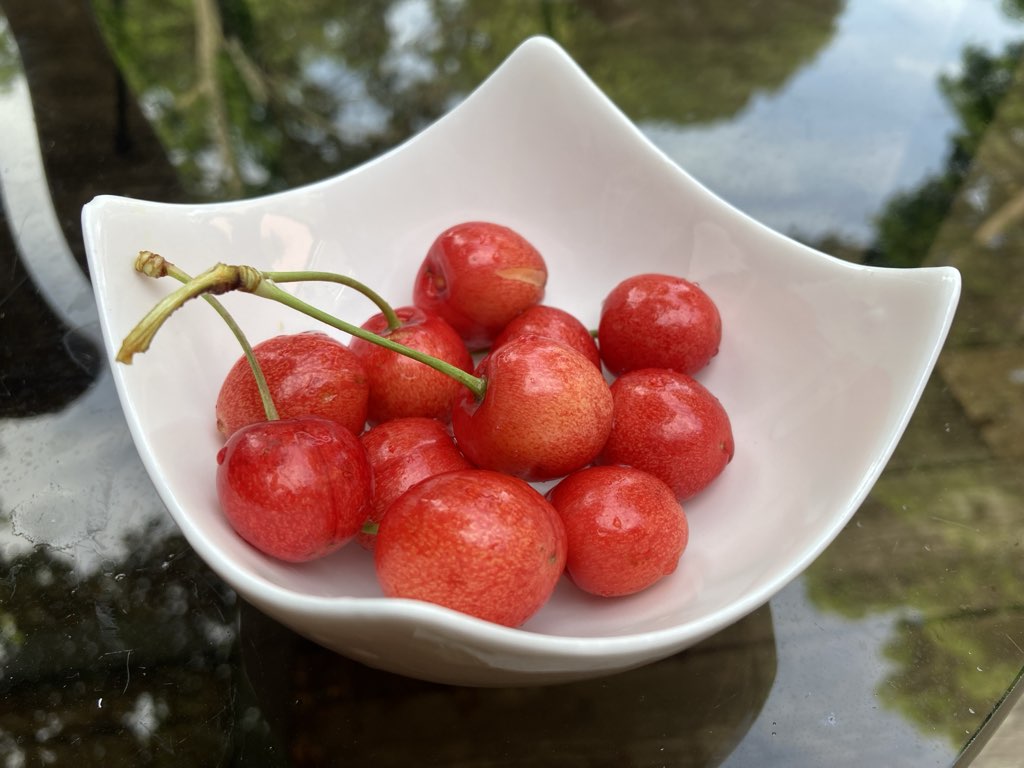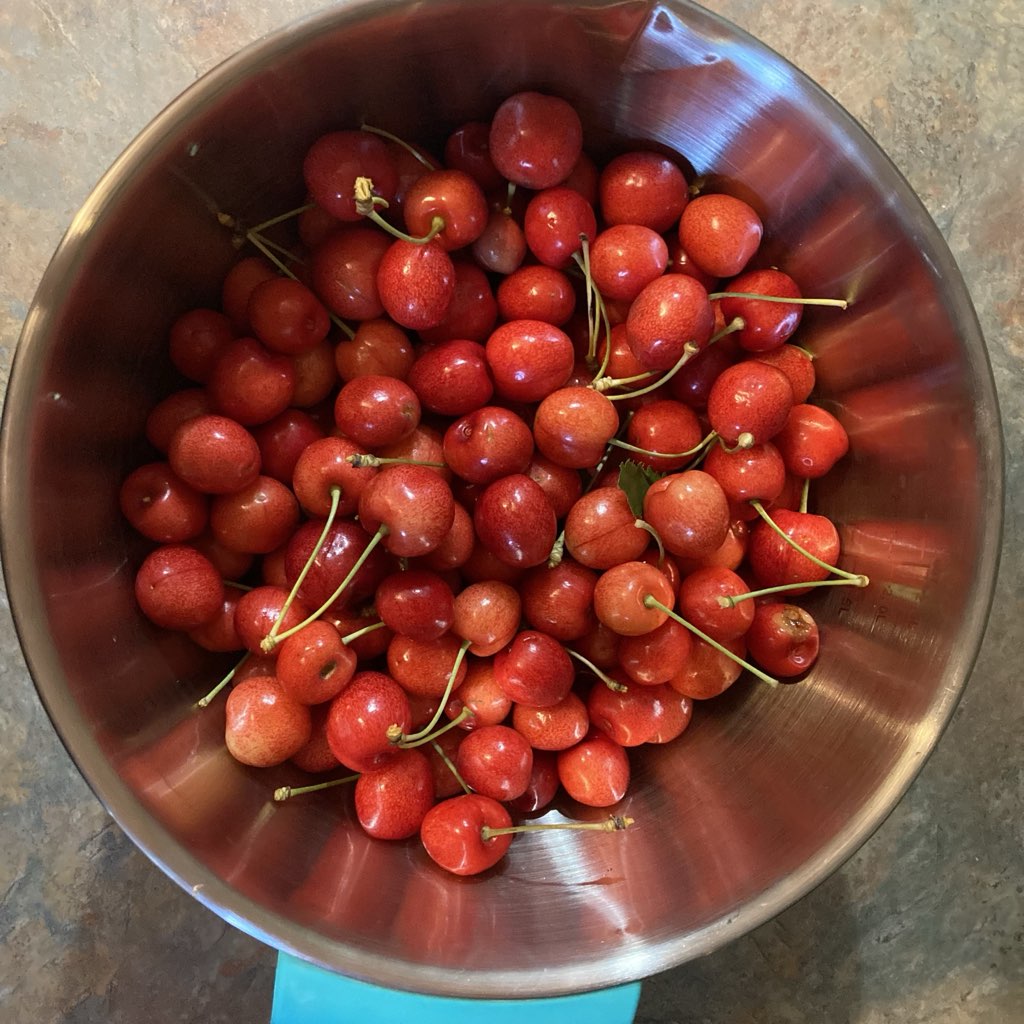Sitting on the deck having breakfast one morning last week, I remarked, looking from afar at our small urban orchard in the back yard, ”wow, that apple tree suddenly has lots of apples!”
Closer inspection revealed these “apples” to not be apples at all, but rather cherries.
As far as I know, in the many years this tree has been growing in our back yard—Catherine and her father planted it more than a decade ago—it has never produced cherries. I’d simply resigned myself to thinking of it as a non-productive apple tree.
But, wow, is it ever producing cherries this year. Scads of them. Sweet, juicy, red cherries.
There will be cherry pies. Perhaps tarts. Muffins. Jam.
There are two possible explanations for the sudden influx of cherries.
First, I may simply have forgotten that we have had cherries in the past. It’s been a heady decade; maybe I simply didn’t have the CPU cycles to notice cherries on the tree (or maybe the birds got them first).
Second, perhaps some ecological happenstance has caused the dormant cherry tree to suddenly produce cherries. We lost many trees — perhaps half the forest cover — in the back yard from Hurricane Fiona. The plum tree that is the cherry tree’s neighbour was felled (though it’s still producing plums, with one toppled foot in the grave). Perhaps pollination is involved?
Are there arborists (or psychologists) in the readership who might shed light on this?



(The line “Cowboy, cowboy marry me I’ll bake you a cherry pie” is from the Elvis Presley song A Cane And A High Starched Collar, from the movie Flaming Star. I could have just as well titled this blog post “Life is not a bowl of cherries,” which is what my mother told me as a child every time I showed any hint of privilege or entitlement.)
 I am
I am
Comments
I am not an arborist but I
I am not an arborist but I have cherry tree experience here at the cottage. Cherry trees can take several years to mature and reach the stage where they are capable of bearing fruit. After about 7-10 years, the tree may have reached sufficient maturity to start producing cherries. Cherry trees generally require cross-pollination with another compatible cherry tree in order to produce fruit. You may have had a lonely tree. Some cherry tree varieties may have a delayed fruiting habit, and it might take several years before they start bearing fruit. Typically you need at least two different cherry tree varieties planted within a certain distance of each other for successful pollination and fruit production. Bees and other pollinators help transfer pollen between the trees, leading to the fertilization of the flowers and the eventual development of cherries. 2024 has had a very favourable Spring with little or no frost that usually is very tough on blossoms.
Happy bees, happy trees.
Someone may have planted another cherry tree in your neighbourhood.
To echo Ray's comment, sweet
To echo Ray's comment, sweet cherries require a pollinator nearby so I would wager that somebody else in the neighbourhood has planted a friend for your tree. Sour cherries, which are my preference for baking, are self-fertile and will produce fruit without a pollinator
Add new comment